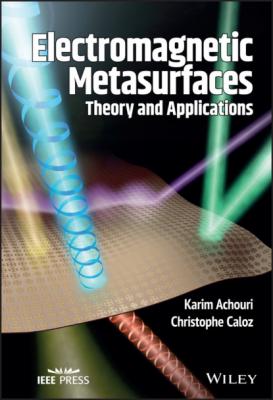Electromagnetic Metasurfaces. Christophe Caloz
Читать онлайн.| Название | Electromagnetic Metasurfaces |
|---|---|
| Автор произведения | Christophe Caloz |
| Жанр | Физика |
| Серия | |
| Издательство | Физика |
| Год выпуска | 0 |
| isbn | 9781119525172 |
Following a similar procedure with a time-asymmetric
(2.14)
Equations (2.13) and (2.14) are the sought Kramers–Kronig relations. They indicate that variations in the real part of the medium parameters are necessarily associated with specific variations in their imaginary parts. For a quantity such as the refractive index, for instance, this implies that transforming an electromagnetic wave (e.g. negatively refracting it) from the real part of the index (e.g. making it negative) necessarily results in a variation of the imaginary part of the index, which corresponds to inserting loss, and vice versa.
2.2.2 Lorentz Oscillator Model
The Lorentz oscillator is a simple classical atomic model that describes the interaction of a time-harmonic field with matter. It was initially developed to describe the resonant behavior of an electron cloud. This model has been widely used to describe the temporal-frequency dispersive nature of materials and their related frequency-dependent refractive index [140]. It turns out to be also particularly useful in describing the responses of metamaterials, as they are generally made of resonant scattering particles.
Let us consider that an electron cloud is subjected to the Lorentz electric force,
(2.15)
where
(2.16)
where
(2.17)
where
(2.18)
Rearranging the terms and noting that
(2.19)
This equation may be written in a more convenient form by noting that the displacement from equilibrium is related to the electric polarization density as
(2.20)
